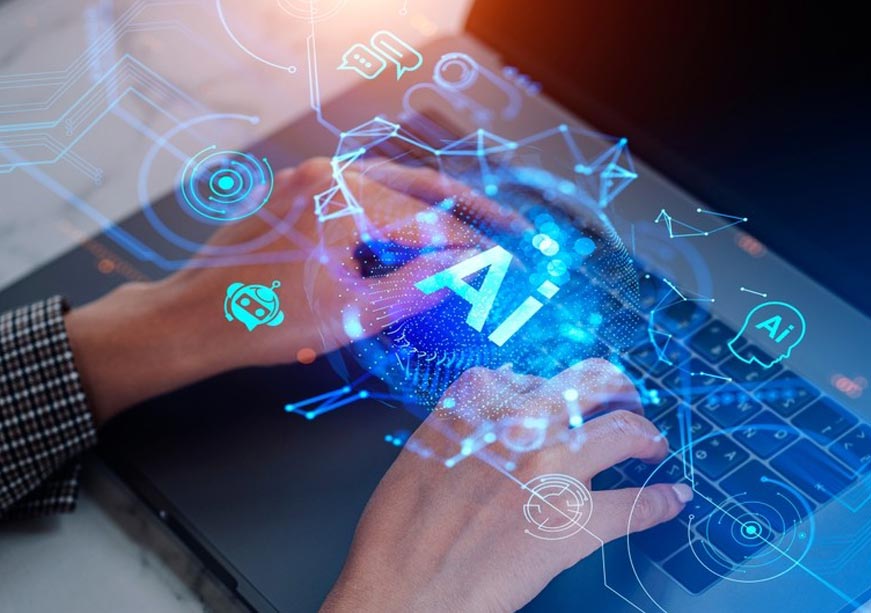India’s learning crisis meets new opportunities: AI can bridge gaps, personalise instruction, and expand educational equity.
One of the biggest challenges in India’s education system is delivering quality learning at scale—across languages, terrains, and institutional types—to the 24.69 crore children enrolled in its schools. Large-scale assessments such as PARAKH(Performance Assessment, Review, and Analysis of Knowledge for Holistic Development) highlight persistent foundational gaps. In Grade 3, only 55 percent of students were able to secure marks up to 99; and in Grade 9, only 31 percent were able to employ advanced concepts involving numbers, fractions, and decimals.
In this context, this article examines how India can leverage Artificial Intelligence (AI) to improve learning outcomes, particularly for children in rural areas or enrolled in government or low-cost private schools.
The COVID Learning Experiment
The COVID-19 pandemic unexpectedly became a nationwide experiment in digital education, revealing both the vulnerabilities and the latent potential of India’s digital infrastructure. When schools closed, governments rapidly deployed a range of digital platforms, such as DIKSHA, WhatsApp/Google classrooms, and video-based lessons. According to a report by the Boston Consulting Group (2021) in collaboration with state governments of Jharkhand, Madhya Pradesh, and Rajasthan, when regular, offline mode of schooling halted during 2020, nearly two million households signed up for digital education within eight weeks. Many users accessed content on basic mobile phones, via applications such as YouTube and WhatsApp, making learning more accessible in low-resource settings. In rural Rajasthan, 96 percent of teachers learned to use the DIKSHA platform during the pandemic and integrated it into lesson plans and assessments. Similarly, 95 percent of students across grades 9-12 used it to access digital textbooks and interactive worksheets in the state.
Interventions during the pandemic were seldom perfect, but they demonstrated that with intent and coordination, technology can deliver high-quality educational content at scale—even to underserved communities.
These interventions during the pandemic were seldom perfect, but they demonstrated that with intent and coordination, technology can deliver high-quality educational content at scale—even to underserved communities. These efforts laid the groundwork for more advanced technologies such as AI to augment and further this rapid evolution in personalising learning, driving equity, and informing governance—essential elements in achieving quality learning for all.
Use Cases of AI to Deliver Quality at Scale in India
The following are the five most crucial use cases of AI in India that closely relate to delivering quality learning.
- AI for Students: Personalised Learning Paths and Remediation
One of the core advantages of AI in education is its ability to tailor instruction to the learner. Unlike traditional models that assume uniform pace and prior knowledge, AI systems can assess a student’s level in real-time and adjust the difficulty, format, or pace of content accordingly. For example, MindCraft, a platform specifically for rural students, helps them transcend language barriers and geographical disadvantages by offering tailored learning content. It includes an AI-powered tutor that teaches using visual cues, fosters interactive problem-solving, and provides career guidance and mentorship based on diagnostic assessments.
Natural Language Processing (NLP) systems are now capable of translating textbook concepts in English and other languages into vernacular languages and generating voice-assisted explanations to help bridge learning gaps.
Furthermore, AI can also be equipped to integrate multilingual and culturally contextualised content, supporting tribal and first-generation learners. Natural Language Processing (NLP) systems are now capable of translating textbook concepts in English and other languages into vernacular languages and generating voice-assisted explanations to help bridge learning gaps.
- AI for Teachers: Planning, Differentiation, and Support
According to UDISE+ (Unified District Information System for Education+) 2024–25 data, there are over 1 lakh single-teacher schools in India. The numbers compound when smaller schools and teacher absenteeism are taken into account, resulting in one teacher often handling multiple grades or subjects. Moreover, the majority of their time is consumed by non-teaching/instructional duties such as administrative work, record-keeping, and non-academic tasks, including preparing registers and conducting surveys.
AI tools can play a crucial role in supporting/augmenting teachers by preparing lesson plans, automating routine tasks, grading assignments, and analysing student performance, thereby reducing time spent on non-instructional tasks and enhancing teaching effectiveness. According to McKinsey, technology can help save 20-30 percent of teachers’ time, which can instead be devoted to classroom instruction.

Source: McKinsey, 2020
An NCERT (National Council of Educational Research and Training)-supported study (2024) revealed that teachers who receive pre-service with AI-assisted lesson planning tools were better able to identify student needs and adapt their instruction. AI-enabled platforms also generated low-prep assessments and automatically grouped students by performance, saving valuable time.
- AI for Assessments: Early Warning and Real-Time Feedback
In traditional education systems, assessments are periodic and summative, and too late to drive timely interventions. In contrast, AI-enabled assessments can prove to be formative and ongoing, offering students real-time feedback and providing teachers with actionable insights.
For instance, IIT (Indian Institute of Technology) Bombay’s TARA (Teacher’s Assistant for Reading Assessment) application employs speech processing and machine learning to automatically evaluate Oral Reading Fluency. It records children reading aloud age-appropriate passages, then computes metrics such as ‘Words Correct Per Minute’ (WCPM) and also analyses expression (phrasing, intonation, stress) to approximate the reading stage of students. The system works in both English and Hindi and has been validated to match human expert scoring. It has already been deployed at a large scale: over 7 lakh students across 1,200 Kendriya Vidyalaya schools covering Grades 3–8.
Teachers who receive pre-service with AI-assisted lesson planning tools were better able to identify student needs and adapt their instruction.
Another relevant dataset is the ASER Children’s Speech Dataset, which comprises thousands of audio clips in Hindi, Marathi, and English from children aged 6-14 reading at various levels. They built an ASR (Automatic Speech Recognition)-based classifier that predicts reading proficiency with 86 percent accuracy (for English). This dataset highlights the feasibility of large-scale speech-based reading level assessment in regional Indian languages.
- AI for Governance and System Monitoring
Beyond classrooms, AI can also help governments and education departments monitor progress, allocate resources, and evaluate impact more efficiently. For example, through predictive analytics and AI-powered dashboards, systems such as SDMS (Student Database Management System)-UDISE+ and Pradhan Mantri (PM) eVidya are helping administrators identify schools or regions at risk of poor performance or high dropout rates, thereby facilitating targeted interventions such as remedial programmes, resource allocation, and teacher support.
Nagaland’s Department of School Education has implemented an AI-based system to monitor teacher attendance using geo-positioning and analytics. The system aims to generate real-time data on whether teachers are present in the school compound, which allows block or district officers to follow up. Another example of how AI can be used to establish a supply chain or resource accountability mechanism is the Kitab Vitran App in Uttar Pradesh. Using QR codes, the app allows teachers to scan and confirm receipt of the Grade 3 supplementary books and reading materials for Hindi and Mathematics. This data is monitored in real-time by officials, enabling prompt corrective action in the event materials are delayed or go missing.
These tools undoubtedly have potential. However, they are yet to be leveraged for full teacher performance or school effectiveness monitoring, or predictive models of system‐level failure beyond obvious resource gaps.
- AI for Inclusive Education: Assistive Technologies and Language Equity
AI also opens up new possibilities for making education truly inclusive, a key mandate under the 2020 National Education Policy (NEP). It can also support learners with disabilities via assistive AI tools, which offer multilingual/ dialectical support (translation, local language content), adapted to their learning styles, pace, and socio-cultural contexts.
AI also opens up new possibilities for making education truly inclusive, a key mandate under the 2020 National Education Policy (NEP).
Several AI apps are being used to support children with autism and learning disabilities: the Screening Tool for Autism Risk using Technology (START) app enables non-specialists to assess autism using mobile-based child tasks and parent inputs in low-resource settings. Additionally, platforms such as CognitiveBotics offer AI-powered therapy through interactive games and chatbots, showing improvements in social and communication skills.
Recommendations for a Responsible AI Future in Education
Nonetheless, the use of AI for learning is not a silver bullet. It cannot replace the skills of a human teacher, and concerns due to infrastructure gaps are irrefutable. Accordingly, the success of any AI intervention depends on how thoughtfully it is designed, governed, and embedded in real-world systems. Therefore, the need of the hour is AI integration, which is also backed by strong ethical safeguards, aligned with educational equity goals, and with a teacher-first approach.
While mobile penetration has increased, challenges in school infrastructure and uneven accessibility at home remain significant for AI-enabled education in rural, tribal and low-resource settings. These gaps mean that AI integration (particularly for students) cannot rely on school-based infrastructure alone; it is more scalable to leverage households’ mobile phones. That too carries its own set of disadvantages: device sharing, gender divide in accessibility, digital illiteracy, unreliable electricity or internet, and privacy concerns.
AI integration (particularly for students) cannot rely on school-based infrastructure alone; it is more scalable to leverage households’ mobile phones.
Eight recommendations can be made to overcome these challenges and deliver AI-powered quality learning to all children in India. First, AI innovations should be designed as offline-first, low-bandwidth, so that the AI tool can function smoothly without constant internet, caching content and syncing when possible. Second, apps should work on low-end phones and allow voice, image inputs, and small file sizes. Setting up shared community access points such as village centres, gram panchayat halls, or local schools, which can host charging stations and devices in households that lack them. Access priority should be given to girls and excluded groups, while training them and their parents to use devices confidently and safely. There is a need to expand mobile networks (4G/5G) to unserved villages and equip schools with solar or battery backup for consistent power. Within schools, teachers should be supported with contextualised tools that generate lesson plans, auto-grade assessments, and suggest group activities, allowing them to focus more on actual teaching. Equally important is investing in teacher capacity by co-designing AI tools with educators and offering short blended training programmes like IIT-Madras’ “AI for Educators.”Finally, ethical AI use should be ensured through anonymised data, bias audits, and adoption of open-source or auditable models, guided by NITI Aayog’s Responsible AI framework.
As India moves to operationalise NEP 2020 and scale foundational learning initiatives, AI offers an unprecedented opportunity—not just to push content, but to truly transform how every child learns.
Arpan Tulsyan is a Senior Fellow at the Centre for New Economic Diplomacy, Observer Research Foundation.












